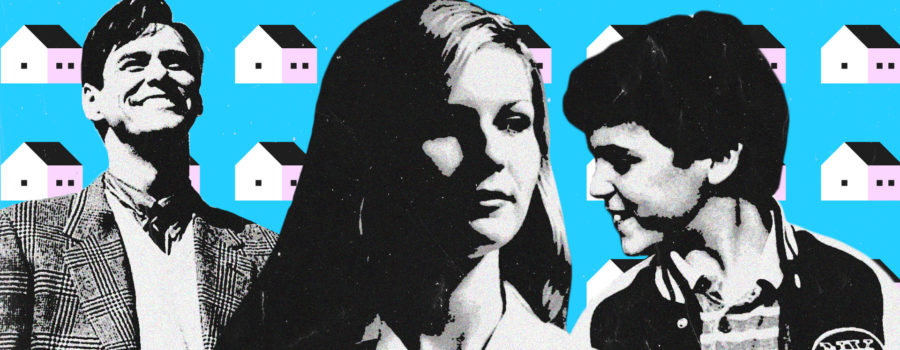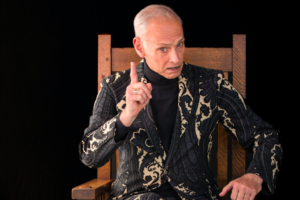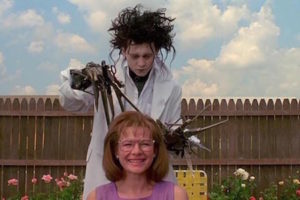[Published at Living Life Fearless] Suburbia has enthralled filmmakers in the visual mediums of film and television since the creation of the post-war nuclear family in the 1950s, serving as a setting, motif, and breeding ground for themes, critiques, and analyses of the distinct and selective culture onscreen which Suburbia has spawned among our pop culture, sociopolitical, and economic zeitgeists. Levittown served as the prototype for large, ticky-tacky neighborhoods that began to pop up over the course of next decade like zits on a sugar-laden teenager on the outskirts of American cities.
Suburbia has enthralled filmmakers in the visual mediums of film and television since the creation of the post-war nuclear family in the 1950s
From an insider’s perspective, these suburbs created a bubble of willful naïveté for many of its residents. From an outsider’s perspective, they often served as another form of segregation in America. America would have another Suburban boom during the Reagan era and its return to traditional values, some three decades later. Although this new iteration of suburbia was incrementally more inclusive, it remained, in large part, more of the same result as America’s attempt to rebuild and reshape its narrative after World War II. Residents grew bored of the mundanity, began to see through their protective bubble, and existential dread often replaced the dog-eat-dog workforce of the generation prior.
Throughout the years, for obvious and understandable reasons, Suburbia has been satirized in various forms on film and television, it has served as a multitude of allegories for larger issues, and it has been negatively portrayed through nightmare-ish hyperboles. However, for every negative on screen portrayal of Suburbia, an endearing homage to the nostalgia of a rose-hued childhood, a cloying tribute to the mystical oddities and mysteries of the elusive, special spots and memories among the neighborhoods and their atmospheres, and a sugar-coated, one-sided depiction of a particular demographic of Americans, and every degree of in between the polar opposite depictions.
Negative:
Halloween (1978)
The scene during which Laurie Strode runs from Michael Meyers throughout Haddonfield, banging on the doors of each resident, shows the apathy and atomization of each nuclear family unit, with the destruction of the community as an essential theme of this scene and the larger film as a whole. Nobody answers, highlighting the collective anxieties residents have about Suburbia – that not only is Suburbia, as aforementioned, riddled by the onset of the satanic panic at this point in time, but it seemingly confirms our suspicions that each house in our “friendly” suburb is a self-contained nucleus, and each family in which they reside is further isolated from outside community relations, particularly after night; they are indifferent to the sufferings of anyone outside their own castle. The whole marketing point of the suburbs is to get away from the invasiveness of the city and enjoy some privacy. As Lorie knocks, this “Don’t disturb us, we’ve earned this privacy” mentality kicks it. The homes may as well be empty, underscoring the isolation of the suburbs.
The Truman Show
Peter Weir’s The Truman Show is a biting satire of the reality TV generation, almost uncannily predicting what entertainment would evolve into – a voyeuristic glimpse into the lives of damaged people… for your viewing pleasure. Released in 1998, the film was decades ahead of its time. The Truman Show is also an allegory for suburban complacency, claustrophobia, and paranoia. Truman Burbank follows the same, exact routine, day in and day out, safely living in his figurative and literal bubble of naïveté. He grows reckless of this repetition. He attempts to escape, but finds it virtually impossible – this breakdown is akin to a midlife crisis. Residents set up roots in suburbs for generations, eventually growing weary of the predestined path that befalls them, begotten by years of routine. Consumerism, as materialized through his show’s many product placements, is ensured to keep the residents of its suburbs stationary for the long-run.
Poltergeist
Although Poltergeist is a film that plays to traditional genre anxieties – ghosts, clowns, monsters, the undead – the biggest collective fear it taps into is the loss loss of family. Beneath the scares, Poltergeist is an allegory for the corrupt rise in bringing the “American family” back to the suburbs and reigniting conservative “suburban values.” The Freeling family’s house is haunted is because the property was built as part of a highly exclusive, 300-acre, single-family community of model homes that were built over a cemetery. The real estate deal was closed in haste, disregarding the dead, to achieve maximum profit.
Cuesta Verde’s downfall represents the sociopolitical backlash of Reaganism, as Reagan’s policies set America back decades in terms of progress. The removal of the Equal Rights Amendment, the elimination of civil rights laws, the defunding of mental institutions and subsequent disregard for mental health and disabilities, and the suppression of voting for African Americans materialized with a vengeance through the poltergeist, wreaking havoc on the Freelings, mere unassuming byproducts representing the average white American family living under the bubble, keeping them at a safe distance from their government’s ulterior motives.
Breaking Bad
By all means, Jesse Pinkman is a poster child for white privilege. Born and raised in the Albuquerque suburbs, he had every opportunity, and then some, to succeed. However, he chose to balk at his classwork in school, and, after that, dealt meth both to feed his drug addiction and to make money. His parents spent a fortune on education over the years with hopes that it would ensure their child a traditional, self-sustaining job. Pinkman’s life was ruined through his business with Walter White and the decisions that led to his addictive behavior in the first place.
Pinkman is an example what happens when the American Dream becomes distilled and distorted across generations. It was always an unattainable ideal. However, the pressure of the suburbs, which vehemently reinforces the false image of rugged individualism in the American Dream, can have the opposite intended effect.
Neutral/Both:
The Virgin Suicides
The girls committed suicide partially out of disillusionment and rebellion, but, above all, because they could. The neighborhood boys’ obsession with them – imagining them in far away places, attempting to put the pieces together – reflects suburban boredom at its most desperate and innocent; the desire to escape the monotony of Suburbia is so strong that it consumes the boys:
“In the end we had pieces of the puzzle, but no matter how we put them together, gaps remained. Oddly shaped emptiness mapped by what surrounded them, like countries we couldn’t name. What lingered after them was not life, but the most trivial list of mundane facts. A clock ticking on the wall, a room dim at noon, the outrageousness of a human being thinking only of herself.”
“So much has been said about the girls over the years. But we have never found an answer. It didn’t matter in the end how old they had been, or that they were girls, but only that we had loved them… and that they hadn’t heard us calling… still do not hear us calling them from out of those rooms… where they went to be alone for all time…a nd where we will never find the pieces to put them back together.”
The boys hold onto the idea of the girls as long as time will allow until the spell of Suburbia consumes them, and, eventually, the girls, and the failures and destruction of the nuclear family that that they represent, fade from their memories.
The OA
The OA co-creator and star Brit Marling shared her thoughts on her desire to bring back the genuine portrayal of Suburbia in film and television with THR:
“We live in a time that’s really complex and really scary and the way we’ve protected ourselves against that terror is by putting on a cloak of irony and cool and cynicism, and those things are effective. I think it’s hard to let too much of it in. But there’s something about this story for whatever reason, the way that it came into the world and all the people who worked on it to make it, it gave us all permission to be unguarded for a moment and raw and the opposite of cynical, and I feel like that’s something that I can really stand behind.”
The suburbs are a place of abuse, letdown, and and anxiety. But also of respite.
“Those are the kind of stories I feel like I am also seeking out. I’m tired of the view of the suburbs where it’s tongue-in-cheek and condescending and belittling to those spaces. I grew up in those spaces! Real things happen in the Costco and the suburban tract housing development. I think for us it was about going to those spaces and finding out what is heartbreaking and sometimes metaphysical and sometimes horrifying and sometimes beautiful and just rendering that.”
In The OA, the suburbs are a place of abuse, letdown, and and anxiety. But also of respite. Of abandoned buildings that illicit comfort in the midst of isolation. Of secret meeting spots. Of healing. Wounds that the Suburbia has caused itself and society outside of itself.
The Graduate
On one hand, we have an aging woman searching for feeling among her dull surroundings; The bored housewife looking for a shred of excitement to escape from her disappointing life. Alas, as aforementioned, many feel as though Suburbia is a self-refuting ideal. One that keeps its residents from moving forward, upward, and breaking free of its suburban straps. Suburbia has everything one needs, so why ever leave?See also
On the other hand, we have a young, naive, ambitious, idealistic young man, unshackled by years of suburban living and consumer complacency, positive he can make a difference in this world, outside his suburban bubble of which he knows next to nothing about.
Stranger Things
Stranger Things is nostalgia on cocaine. It portrays a complexity in each Suburban household not often seen on screen. Rather than sameness, it conveys diversity and dysfunction relatable beyond suburban or suburban-raised viewers. Audiences of all backgrounds can enjoy Stranger Things, without having to have particular nostalgia for Suburbia, as the aforementioned covers all things ‘80s – from Dungeons and Dragons, to shopping malls, to Back to the Future, to New Coke.
However, secret meetings in basements and attics, staying up late and sneaking out at night, communicating secret code through walkie talkies, riding bicycles through the quiet neighborhoods of Hawkins, Indiana, an unassuming suburb ideal for a moral panic on par of the satanic panic era of that time period.
Positive:
The Wonder Years
The Wonder Years begins in 1968. The title alludes to a more positive depiction of Suburbia: Suburbia 1.0. It offers a different perspective – that of an old man recalling his formative years growing up in the suburbs. Instantly, in the pilot, the protagonist, Kevin Arnold, confronts the hotly-debated nature of Suburbia:
“There’s no pretty way to put this… I grew up in the suburbs. I guess most people think of the suburb as a place with all the disadvantages of the city, and none of the advantages of the country. And vice versa. But, in a way, those really were the wonder years for us there in the suburbs. It was kind of a golden age for kids.”
Kevin’s privileged childhood wasn’t bogged down by the politics or the economic ostracizing of the place in which he lived
Kevin’s privileged childhood wasn’t bogged down by the politics or the economic ostracizing of the place in which he lived. Because why would a child? In retrospect, he addresses the critics of his beloved birthplace, recalling his first kiss with childhood sweetheart Winnie after consoling her for the death of her brother.
“Whenever some blowhard starts talking about the anonymity of the suburbs, or the mindlessness of the TV generation. Because we know that inside each one of those identical boxes, with its Dodge parked out front, and its white bread on the table, and its TV set glowing blue in the falling dusk, there were people with stories. There were families bound together in the pain and the struggle of love. There were moments that made us cry with laughter. And there were moments, like that one, of sorrow and wonder.”
E.T.
Suburbia is a place where traditions flourish. E.T. embraces this notion. Family dinners, regularly-scheduled programming, door-to-door trick-or-treating on Halloween. However, E.T. is an outsider who doesn’t belong in this neighborhood. Who doesn’t belong in Suburbia. He must be imprisoned by the government when exposed by the public, instead of doing what he wants and needs in order to survive and flourish. This dynamic is an allegory for illegal workers in middle and upper class suburbs. As is often the case, the government’s solution is self-serving and harmful to society. In the end, family prevails over the evil government suits in this family suburban fantasy.
The Goonies
The Goondocks of Astoria aren’t the suburbs. However, The Goonies is an example of how important it is to preserve culture and history. No Cuesta Verde. No wealthy residents driving out the lower-income ones. The Goonies is an underdog story about fighting for one’s home and what it stands for. On the other side of Astoria lies Hillside, the wealthy suburbs, where its residents threaten to build a country club over the Goondocks, uprooting the longtime working class residents, of which the Goonies belong. Not every housing development is viable, and not every developer succeeds. For every development deal fallen through, there’s a group of Goonies celebrating somewhere.
That ‘70s Show
The essence of That ‘70s Show, and it’s attitude towards Suburbia, is all in the theme song’s lyrics:https://www.youtube.com/embed/YdDC0XzhOEo?version=3&rel=1&showsearch=0&showinfo=1&iv_load_policy=1&fs=1&hl=en-US&autohide=2&wmode=transparent
If there ever was a golden age of Suburbia, the 1970s was it. Before the vapidity turned entirely cynical and was clouded by Reagan’s return to the suburbs. When you could just hang out “down the street” and do the “same old thing” you do every week. These residents of this particular Wisconsin suburb passed their time by smoking pot. A lot of it. And sharing stories. And sleeping around. And gossiping. It was a groovy depiction of white suburban life. However, beneath the jubilee, there lied a sobering comment on the brutality and ethics of imperialistic war through Red’s struggling depression and detached demeanor.
Honorable Mentions:
Edward Scissorhands
Tim Burton insists that Edward Scissorhands isn’t meant to be a negative depiction of Suburbia, however, the film can be interpreted in a plethora of ways.
Please see the “Suburban Satire” section of The Visual & Thematic Motifs of Tim Burton – Part 1, for more about Burton’s noteworthy suburban satire.
Donnie Darko
Richard Kelly’s suburban satire layered with sociopolitical dramedy ranks among the most unique depictions of Suburbia. The predominantly Catholic and conservative town of Middlesex is a breeding ground for sin. Drugs. Premarital sex. Senseless violence. Adultery. Murder. Pedophilia. Many of these acts are incorporated into common horror tropes, imbuing in the film a sense of ominousness when coupled with its darker themes and foreboding cinematography.
The divine intervention allegory at the heart of Donnie’s character arc represents a delusion of grandeur manifested out of the boredom that begets the much of the sinful behavior that happens under Middlesex’s seemingly normal guise. Donnie’s Christ-like comparison is compounded when his death essentially absorbs the secrets – the sins – of Middlesex, for better or for worse.
Suburbia in Spades
Whereas McCarthyism lurked over the suburbs of the 1950s, the satanic panic of the 1980s largely contributed to the manifestation of the collective suburban fear that just underneath the surface of this utopian bubble, evil stalks us in various forms. Bookend examples Halloween (1978) and Donnie Darko (2001) exemplify this collective suburban anxiety the most among the examples provided.
Regardless of sociopolitical influence in the suburban satire subgenre of film, the ever-changing housing developments remain sufficient fodder for filmmakers today, with timely examples popping up every year.








Leave a Reply
Your email is safe with us.